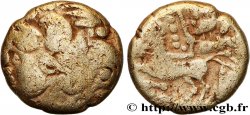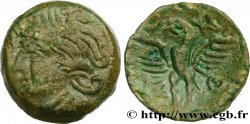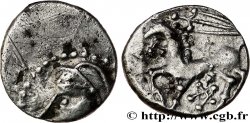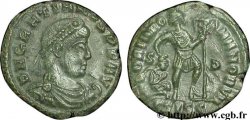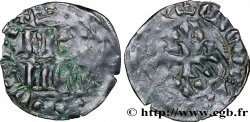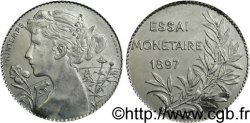bga_686838 - GALLIA - BITURIGES CUBI (Area of Bourges) Denier au rameau et à l’annelet pointé
110.00 €(Approx. 124.30$ | 93.50£)
Quantity
Add to your cart

Type : Denier au rameau et à l’annelet pointé
Date: c. 60-50 AC.
Mint name / Town : Bourges (18)
Metal : silver
Diameter : 14,5 mm
Weight : 1,92 g.
Rarity : R2
Coments on the condition:
Monnaie centrée au revers, avec de bien jolis détails au revers. Belle patine grise de médaillier
Catalogue references :
Obverse
Obverse legend : ANÉPIGRAPHE.
Obverse description : Tête à gauche ; les cheveux disposés en trois mèches.
Reverse
Reverse legend : ANÉPIGRAPHE.
Reverse description : Cheval sexué libre au pas à gauche ; au-dessus un rameau ; un annelet pointé entre les jambes.
Commentary
Ce denier correspond à la classe II du Type II du Nouvel Atlas, "à un seul annelet pointé".
Nous n’avons proposé que très peu d’exemplaires de cette variété ; la plupart des monnaies au rameau ont trois annelets. Les pointages du Numéraire Celtique listent 15 monnaies avec un seul annelet et 18 avec les trois annelets, mais ce pointage est erroné (l'exemplaire n° 394 de MONNAIES XV, avec trois annelets, y est par exemple considéré comme n’ayant qu’un annelet...).
Nous n’avons proposé que très peu d’exemplaires de cette variété ; la plupart des monnaies au rameau ont trois annelets. Les pointages du Numéraire Celtique listent 15 monnaies avec un seul annelet et 18 avec les trois annelets, mais ce pointage est erroné (l'exemplaire n° 394 de MONNAIES XV, avec trois annelets, y est par exemple considéré comme n’ayant qu’un annelet...).







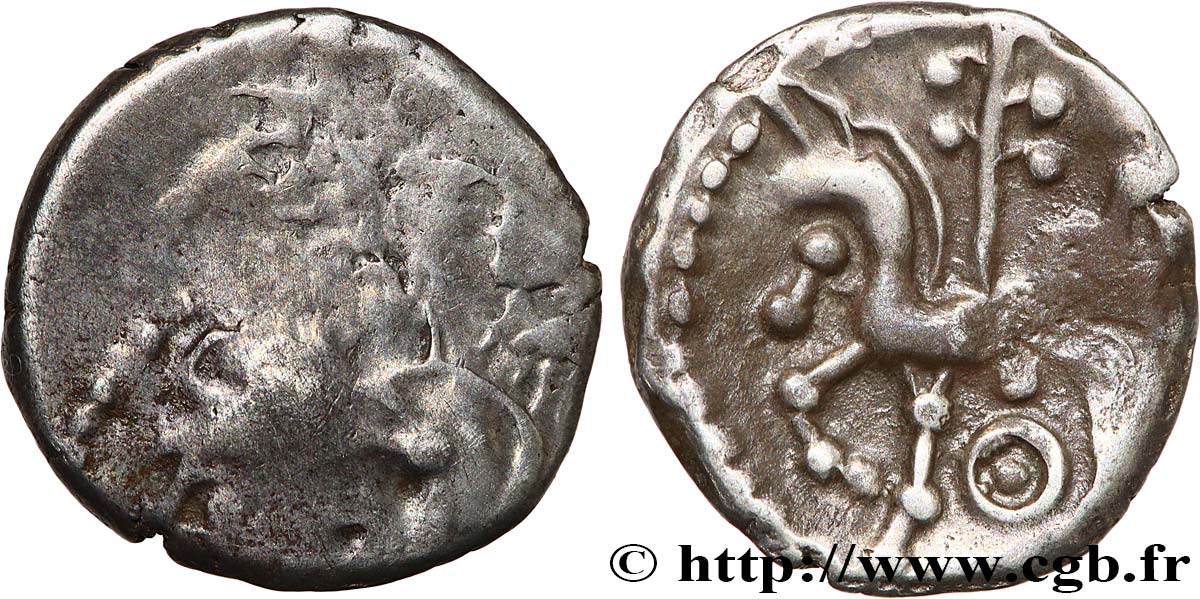
 Report a mistake
Report a mistake Print the page
Print the page Share my selection
Share my selection Ask a question
Ask a question Consign / sell
Consign / sell
 Full data
Full data
